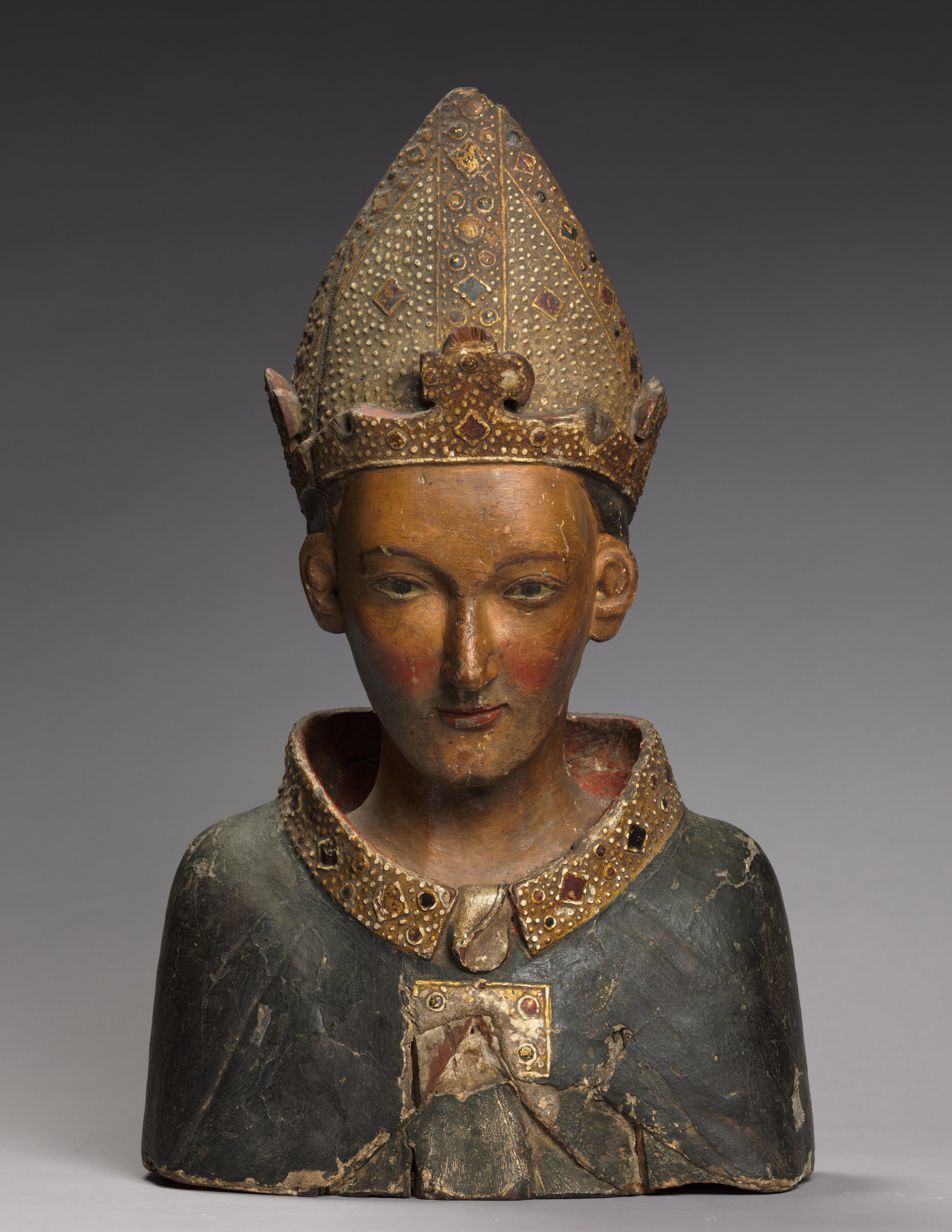The Cleveland Museum of Art
Collection Online as of April 20, 2024

Bust Reliquary of St. Louis, Bishop of Toulouse
late 1300s
Overall: 62 x 38.2 x 18.8 cm (24 7/16 x 15 1/16 x 7 3/8 in.)
Gift of Albert van Stolk 2011.153
Location: 110A Italian Gothic
Did You Know?
This small bust was hewn out of wood, but painted realistically. Its life-like accuracy gave the medieval worshipper the sense that they were in the presence of the beloved bishop Saint Toulouse.Description
This reliquary bust was probably made to house a relic of Saint Louis, Bishop of Toulouse (1274–97), second son of Charles II of Anjou, King of Naples (1288–1309). Renowned for his works of charity, he was made bishop in 1297 and died shortly after at the age of 23. He was canonized in 1317, and his cult of veneration spread rapidly in Italy and Spain. In art, Louis is generally represented as a "boy" bishop without a beard and with youthful features. The relic (now lost) would have been enshrined within. On feast days the reliquary would have likely been carried in procession and otherwise placed in a church sanctuary or on a side altar for the veneration of the faithful.Relics were the physical remains of the saints, chiefly their bodies. The living venerated the relics of the saints in order to seek their patronage, which in turn provided a proximate link to the divine ruler. The power of the saints was therefore manifested by and through their relics, or objects that were owned or touched by them. Medieval pilgrims, in a world fraught with peril, sought close physical contact with relics, which protected both the spiritual and temporal welfare of laypeople and religious communities.
- This artwork is made primarily from a single piece of wood carved to form the head, neck, and chest of the figure; the tree rings and rough tool marks used to hollow out the interior are seen easily from the undecorated underside. Smaller pieces of wood were added to the main body to form the shoulders and close the hollow cavity at the back, which is empty. There was once likely another piece to cover the bottom of the sculpture. Not long after acquisition, the sculpture was taken to a local hospital for a CT scan to learn more about the construction and to image the tree rings. Further study of these scans by a dendrochronology lab showed that the outer measurable ring of the bust dates to 1372, so the carving must have been done sometime after that. Further research is still needed to better estimate the tree’s felling date.
After the artist or workshop finished carving the wood, the surface was covered with a plain weave textile, followed by gesso. Additional gesso was built up to create three-dimensional decoration on the miter and collar, and these areas were gilded. Additional translucent resin paints were added to create the illusion of cabochon jewels.
The object was treated in the lab in 2012 to stabilize it for display and to learn more about the materials and techniques used. Flaking paint and gesso were stabilized with a low percentage photographic gelatin solution, applied by brush under magnification. Small test cleaning areas did not prove successful due to the layers of paint and coatings that had been built up over time, and small samples of paint were selected to learn more. These paint samples were embedded in resin and studied, and it was discovered that Saint Louis’s garment was originally blue instead of the black-brown color seen today. Larger gesso and paint losses were filled with removable acrylic spackle and inpainted with acrylics, both to visually integrate these areas and to protect the fragile original material from further loss. The case that houses this object, like many cases at the museum, contains silica gel that helps keep the relative humidity in the case very stable, preventing additional dimensional changes in the wood and additional damage to the layers of decoration. - Mr. Jan Bertram van Stolk, Amsterdam (died 1927), published in his sales catalogue; Mr. Albert van Stolk, South Euclid, Ohio (by inheritance from his grandfather, Jan Bertram. The object was brought to Cleveland by Albert van Stolk when he emigrated from Amsterdam during World War II.
- {{cite web|title=Bust Reliquary of St. Louis, Bishop of Toulouse|url=false|author=|year=late 1300s|access-date=20 April 2024|publisher=Cleveland Museum of Art}}
Source URL:
https://www.clevelandart.org/art/2011.153